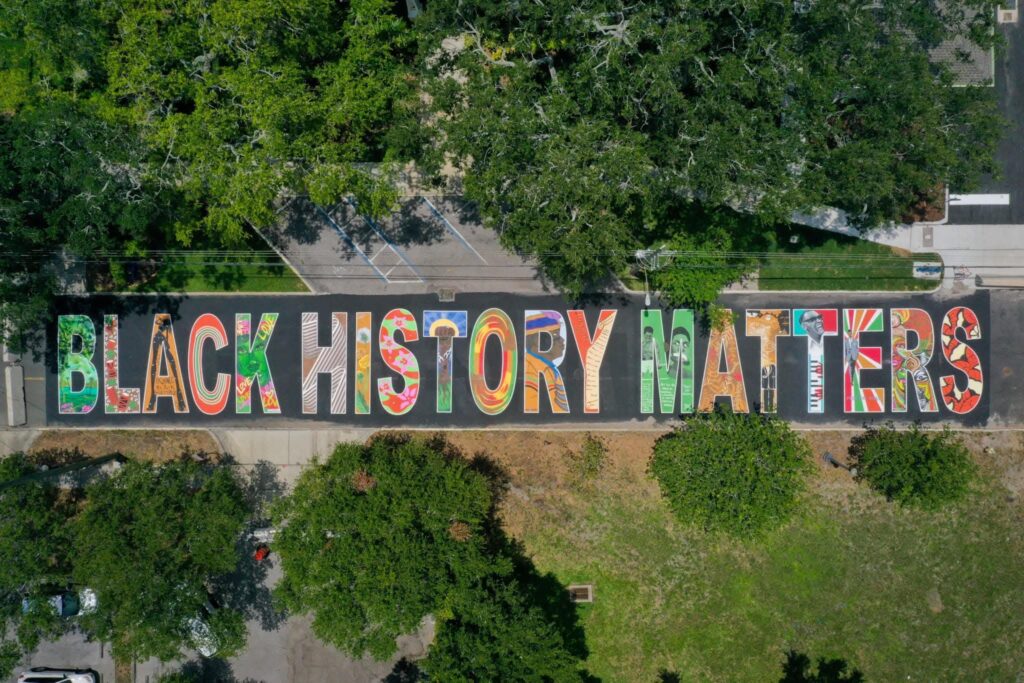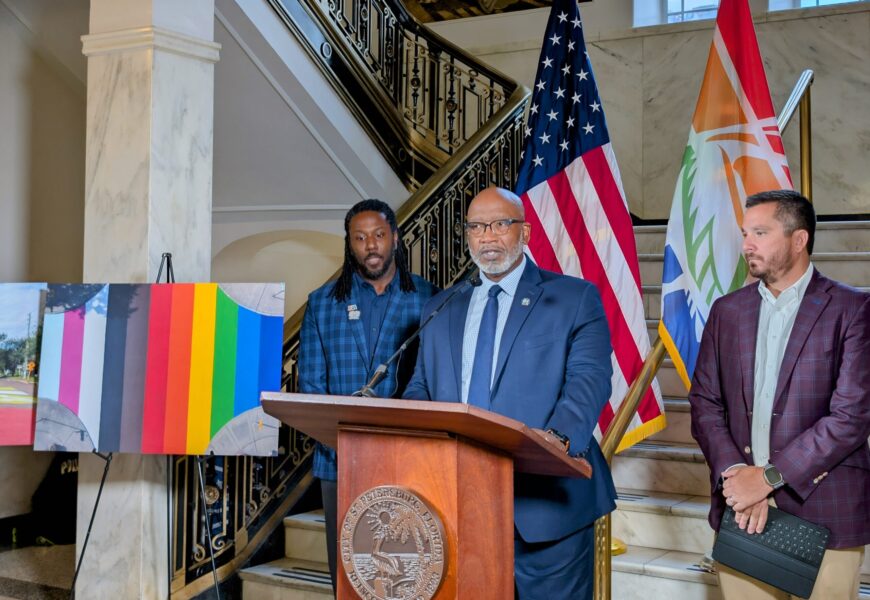While the City of St. Petersburg will not challenge the state’s ban on street murals in court, Mayor Ken Welch has pledged that “this is not the end of the story.”
Welch addressed what he called yet another attempt by state or federal officials to “usurp our local values” Monday morning at City Hall. The Florida Department of Transportation (FDOT) rejected his administration’s bid to keep five pavement art installations in a letter sent Friday.
The city had 14 days to request an administrative hearing. However, FDOT wrote that it would no longer consider any exceptions or waivers and repeated its threat to withhold state funding.
“As mayor of our city, I will not risk these essential investments in a fight that I don’t believe we can win,” Welch said. “That would be irresponsible leadership and detrimental to our city in the long run. Our response will be strategic, not reactionary.”
Although it “may not be as emotionally satisfying as a street brawl,” Welch said the city will “build back stronger” and create new “powerful expressions of who we are – expressions that cannot be erased by the state.”
FDOT gave the city until Sept. 4 to remove the artwork. Those include the Black History Matters mural at 9th Avenue and 22nd Lane South; the Common Ground (colored prism) mural at Central Avenue and 5th Street North; the Fluid Structures mural at 6th Avenue and 2nd Street South (University of South Florida); and the Crossway Crux mural at 11th Avenue and 46th Street South (Childs Park).
“These works were born from collaboration and a shared belief that art can transform spaces and spark dialogue,” Welch said. “They represent us. They will continue to represent us in new and resilient forms.”
He said the Common Ground intersection mural, St. Petersburg’s first, reduced traffic accidents by 70% and became a “model for art-driven safety.” The city provided that data to FDOT and emphasized that the installations are “more than paint on pavement.”
The saga began with a June 30 internal FDOT memo that cited safety concerns and potential interference with automated vehicles. Assistant Secretary Will Watts wrote that social, political and ideological messaging are examples of non-compliant street art.
Watts noted that the department may grant exemptions if local governments “demonstrate good cause for doing so.” However, U.S. Transportation Secretary Sean Duffy said taxpayers “expect their dollars to fund safe streets, not rainbow crosswalks,” in a subsequent social media post.
Welch said Monday that FDOT, with support from Gov. Ron DeSantis and the USDOT, could jeopardize “millions of dollars in state transportation funding and potentially tens of millions more in broader state funding.” After consulting with city attorneys, his administration “did not see a pathway” to keeping the installations through litigation.
The onus to erase the pavement art is now on FDOT, which has not provided a removal date. “It’s not our decision – we disagree with it,” Welch said.
“So, FDOT should be the ones to remove it.”

The “Black History Matters” mural, adjacent to the Woodson African American Museum of Florida. Photo: City of St. Petersburg.
The state painted over a rainbow crosswalk in Orlando last week that honored the 49 people killed at Pulse nightclub in 2016. Residents then began redecorating the area with chalk.
State leadership stationed Florida Highway Patrol troopers at the intersection Sunday to deter any would-be artists. Welch encouraged people to visit St. Petersburg’s mural sites and post photos with captions like “we are St. Pete,” but noted it is illegal to block roadways.
“We want folks to protest and exercise their First Amendment rights, but do not break the law,” he said. “Do not block the intersection.”
City Council Chair Copley Gerdes pledged that St. Petersburg will “rise above” and find “new and innovative ways” to highlight the city’s inclusivity. St. Pete Pride president Byron Green-Calisch said stakeholders have discussed “what does that fight look like after this.”
“We’ve been in conversations with the mayor’s office and the city council, both with ideas that are coming to us from individual community members and from organizations across the state,” Green-Calisch added. “We have so many people excited to join our fight here, recognizing that Florida is the playbook for what will happen across the country.”
Welch said the erased artwork will live on through murals on city-owned buildings, private property and banners and flags. “To those who think they can silence St. Petersburg, all you have done is amplify our voice.”

